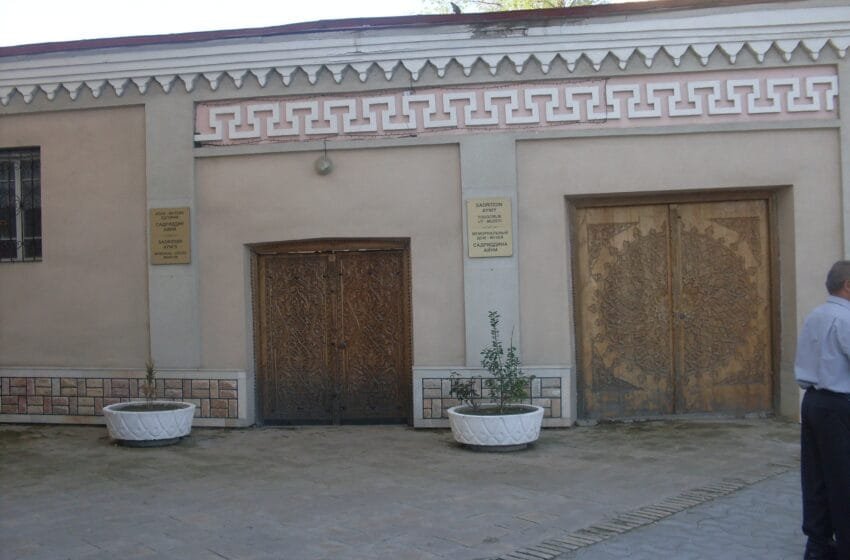House-Museum of Sadriddin Ayni in Samarkand, Uzbekistan: Celebrating Over 70 Years of Legacy

“House-Museum of Sadriddin Ayni in Samarkand, Uzbekistan: Celebrating Over 70 Years of Legacy”
The House-Museum of Sadriddin Ayni, nestled in the historic city of Samarkand, Uzbekistan, is a living tribute to the life and extraordinary literary achievements of Sadriddin Ayni, a celebrated Tajik and Uzbek writer, translator, and literary scholar. The house, which served as his residence from 1917 to the early 1950s, has been preserved to honor his profound contributions to the cultural and intellectual landscape of Central Asia. Open to the public daily from 9:00 AM to 8:00 PM, the museum offers a unique glimpse into the personal and professional life of this remarkable figure.
Historical Background
The former home of Sadriddin Ayni is situated in the heart of Samarkand’s old town, on Registan Street, within walking distance of some of the city’s most iconic landmarks, including Registan Square and the Gur-e-Amir Mausoleum. Across the street lies the picturesque Poets’ Alley park, as well as Middle School No. 2, named after the great astronomer Mirzo Ulugbek.
In 1917, Ayni sought refuge in this house while fleeing persecution by the Emir of Bukhara, Seyid Alim Khan. Over the course of nearly 35 years, this modest home became a sanctuary where Ayni could write, reflect, and engage with some of the most brilliant minds of his era.
The house itself is divided into two distinct sections:
- The original section, built in the late 18th or early 19th century, retains much of its historical charm.
- The newer section, constructed during the 1930s by Ayni himself, with the help of close friends and colleagues, reflects the evolving architectural and cultural trends of that time.
Transformation into a Museum
The idea of preserving Ayni’s residence as a museum was first realized in 1967, under the leadership of Sharaf Rashidov, a prominent political figure in Uzbekistan. The house was officially converted into the House-Museum of Sadriddin Ayni, creating a space where visitors could connect with his life story and explore his lasting impact on Tajik and Uzbek literature. Since its establishment, the museum has become a cornerstone of Samarkand’s cultural heritage.
Exhibitions and Preserved Spaces
The museum’s carefully curated exhibits transport visitors back in time, offering an intimate view of Ayni’s life and work. The preserved sections of the house include:
- Living quarters, showcasing the simplicity and elegance of the era.
- Two working offices, where Ayni penned some of his most iconic works.
In these rooms, visitors can see:
- Personal artifacts, including his desk, writing tools, and everyday belongings.
- Historic furniture and household items reflecting life in the late 19th and early 20th centuries.
- Manuscripts and books, including his most famous works, such as:
- Odinah,
- Eski Maktab (The Old School),
- Kullar (Slaves),
- Yatim (Orphan),
- Voskreseniye Mukanny (The Rebellion of Mukanna).
One of the most striking features of the house is the Nakshinkor Room, renowned for its intricate decorative details. In this room, visitors can see a traditional sandal, a coal-heated stove that Ayni used to stay warm during the winter months. Adjacent to this is a reception room, where Ayni hosted numerous literary figures, including:
- Gafur Gulam,
- Abdurauf Fitrat,
- Hamza Hakimzade Niyazi,
- Usman Nasir,
- Hamid Olimjon, among others.
The museum also includes a charming courtyard where several trees, planted by Ayni himself, still thrive. Among them are:
- Two apple trees, Ayni’s favorite fruit,
- A peach tree, and
- A grapevine, which adds to the tranquil atmosphere of the property.
Literary Legacy and Library
The museum houses a comprehensive collection of Ayni’s published works, spanning multiple languages and regions. Notable highlights include:
- 15 volumes of books in Tajik,
- 8 volumes in Uzbek,
- 6 volumes in Russian,
- Additional works translated into Persian and other languages.
Visitors can also explore an extensive archive of historical newspapers, journals, and handwritten manuscripts. This collection provides invaluable insights into the socio-political and cultural context in which Ayni lived and worked.
Cultural Activities and Community Engagement
Beyond its role as a historical site, the House-Museum of Sadriddin Ayni serves as a vibrant cultural hub. It regularly hosts:
- Creative workshops for aspiring writers and artists,
- Literary discussions and lectures on Central Asian history and literature,
- Exhibitions showcasing rare artifacts and manuscripts,
- Educational programs for students and researchers.
These events ensure that Ayni’s legacy continues to inspire and resonate with new generations, fostering a deeper appreciation for the rich literary traditions of Tajikistan and Uzbekistan.
Architectural Features
The house itself is an architectural gem, reflecting a blend of traditional Central Asian and early Soviet design elements. Key features include:
- Decorative woodwork, evident in the columns and beams of the reception areas.
- Ornate plasterwork, especially in the Nakshinkor Room.
- Aesthetic symmetry in the layout of the living and working spaces.
The courtyard, with its lush greenery and meticulously maintained pathways, provides a serene backdrop for visitors to reflect on Ayni’s contributions to literature and culture.
Conclusion
The House-Museum of Sadriddin Ayni is more than just a historical landmark—it is a gateway to understanding the intellectual and cultural evolution of Central Asia during a transformative period. By preserving Ayni’s legacy, the museum offers visitors an opportunity to connect with the life and works of a literary giant whose influence transcends time and borders. Whether you are a literature enthusiast, a history buff, or a curious traveler, this museum is a must-visit destination in the enchanting city of Samarkand.




